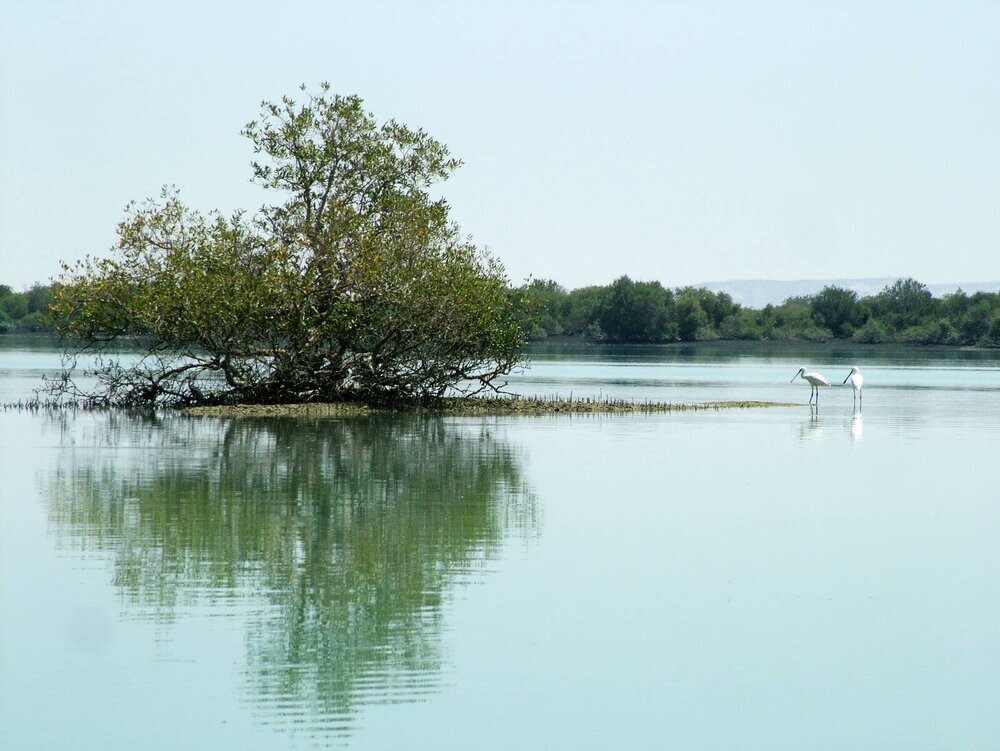Some 100,000 mangrove saplings to be planted in 2 provinces

TEHRAN – The Department of Environment is planning to plant some 100,000 saplings of mangrove in the two southern provinces of Sistan-Baluchestan and Khuzestan, IRNA reported.
Mangrove forests are rich ecosystems that support the planet and humanity in unique ways by providing conditions for fish growth, storing carbon, and fighting floods. They are able to store about 6 to 8 tons of carbon per hectare of soil per year.
In January, IRIB reported that provincial authorities in participation with local communities in Bandar Lengeh port city, southern Hormozgan province, were planning to plant 50,000 mangrove saplings.
Bandar Lengeh is one of the most important aquatic habitats from a natural point of view, and in terms of tides, it has special conditions for planting mangrove seedlings.
Protecting the soil and beaches against waves and sea storms, greening the shores of the Persian Gulf, reducing seawater pollution, creating a safe place for birds and aquatic life, reducing the temperature of the coastal environment, and creating suitable spots for tourism development are among the main goals of the plan.
With more than 25 thousand hectares of mangrove forests, Hormozgan has the most natural mangrove forests among the Persian Gulf countries.
Only 55 countries in the world, including 14 Asian countries have large areas of mangrove forests.
In terms of mangrove forests, Iran ranks 43rd in the world.
Protecting beaches from floods and tsunamis, preventing coastal erosion, supporting the nutrient cycle in water, suitable habitats for plants and animals, producing oxygen due to photosynthesis, providing resin and tannin raw materials, a food source for fish and shrimp, the use of the genes of these trees in biotechnology as genetic resources, medicinal properties, beauty, and natural landscape and tourist attraction are some of the benefits of mangrove forests.
Yet mangroves are disappearing three to five times faster than overall global forest losses, with serious ecological and socio-economic impacts. Current estimates indicate that mangrove coverage has been divided by two in the past 40 years.
Due to the importance of these trees, in 2015, UNESCO designated July 26 as the International Day for the Conservation of the Mangrove Ecosystem, to raise awareness of the integral role of mangrove ecosystems and to promote solutions for their conservation, sustainable management, and utility.
There are 107 species of mangroves, two of which grow in Iran, called Hara and Chandel. The forests are distributed in three provinces of Hormozgan, Sistan-Baluchestan, and Bushehr.
In 1972, mangrove-covered lands were nationally managed as protected areas. In 1976, it was accepted and registered as a biosphere reserve. In 1977, the pristine areas of mangrove forests, flower gardens, and streams in the Strait of Khuran were registered as important wetlands of international value (Ramsar site).
The RAMSAR Convention, an international treaty, was adopted in 1971. Ramsar Wetlands are sites inscribed on the List of Wetlands of International Importance (the "Ramsar List") under the Convention on Wetlands.
Controlling coastal erosion means preventing the destruction of beaches against waves and storms, stabilizing sedimentation and preventing its movement with a special root system, and protecting coral reefs are important features of the mangrove forest in maintaining the biodiversity of the region, and the mangrove forest provides the habitat needs of aquatic animals so that many aquatic species spend their initial stages of growth and reproduction in these forests.
Some 150 species of migratory birds are wintering in the wetlands and mangrove forests of Southern Qeshm Island.
The area is a major habitat for migratory birds in the cold season and for reptiles, fish, and varieties of Arthropoda and bivalves. Green (or hooked) turtles and venomous aquatic snakes are also indigenous to the forests.
Beautiful birds such as Dalmatian pelicans, cormorants, European bee-eater, larks, and flamingos came to the Hara Biosphere Reserve and its wetlands.
MG
Leave a Comment